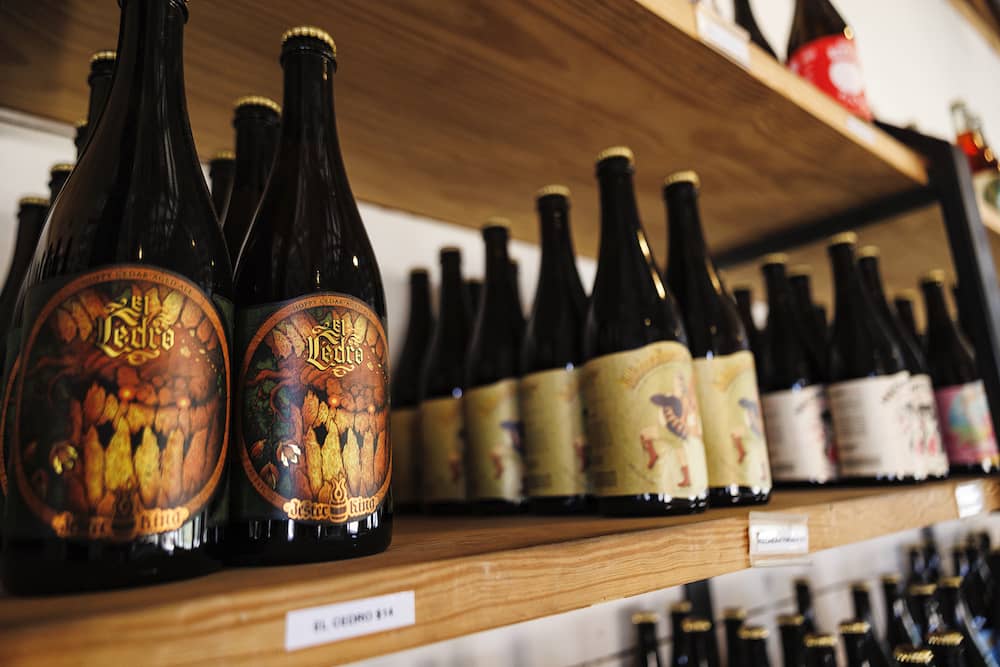Breweries in Galveston Texas: Regional Craft Beer Adventures
Breweries in Galveston Texas: Regional Craft Beer Adventures
Blog Article
Opening the Mysteries of Distillery Processes: A Thorough Review
Within the world of distillery processes exist intricacies that frequently stay veiled to the laid-back viewer. As we venture right into the depths of spirit aging methods and the accuracy of high quality control procedures, a tapestry of flavors and aromas arises, shaped by cutting-edge practices and time-honored practices.
The Art of Mashing and Fermentation
In the distillery process, the art of mashing and fermentation plays a crucial role in changing raw materials into the first phases of alcohol production. Mashing involves the process of breaking down the starches in grains like barley, rye, or corn, right into fermentable sugars.
As soon as the wort is developed, fermentation enters play. Yeast, a principal in this phase, is contributed to the wort to start the fermentation procedure. Yeast eats the sugars in the wort, generating alcohol and co2 as byproducts. This transformative process usually takes several days to complete, relying on the preferred alcohol material and taste account.
Mashing and fermentation are intricate processes that set the structure for the alcohol that will ultimately be distilled and aged to create a last product with distinctive attributes and flavors.
Comprehending the Distillation Process
One of the pivotal phases in the manufacturing of alcohol includes comprehending the purification process. Distillation is a method used to separate alcohol from the fermented fluid, generally with home heating and cooling down procedures.

Recognizing the purification process is critical for distillers to manage the top quality, stamina, and taste of the alcohol being generated. By mastering the art of purification, distilleries can create a wide variety of spirits with distinctive characteristics that attract different customer choices.
Keys of Spirit Aging Techniques
Exploring the ins and outs of spirit aging techniques unveils the hidden virtuosity behind the development of nuanced tastes and aromas in distilled drinks. The aging procedure is an essential phase in the manufacturing of spirits, where the liquid communicates with the oak barrels, taking in compounds that improve its profile over time. Distilleries often make use of charred oak barrels, which present one-of-a-kind tastes to the spirit through a procedure of removal and oxidation.
Additionally, the environmental problems in which the barrels are kept play a substantial duty in shaping the final item. Changes in temperature and moisture can influence the rate of aging and the interactions in news between the spirit and wood. Master distillers masterfully browse these variables to craft spirits with distinctive characters, personifying the conclusion of cutting-edge methods and time-honored practices.
Quality Assurance and Testing Techniques
The thorough workmanship showed in controlling and selecting barrels aging durations in the spirits manufacturing process underscores the critical relevance of rigorous quality assurance actions and accurate screening methods (Seawall Bar). Quality assurance in additional resources distilleries includes several phases to make certain that each set fulfills the wanted criteria. From resources assessment to end product evaluation, each action is essential in maintaining uniformity and quality
One important aspect of quality control is sensory evaluation, where skilled experts assess the fragrance, flavor, and general quality of the spirits. Chemical evaluation techniques such as gas chromatography and mass spectrometry are utilized to find any impurities or variances from the preferred structure. Furthermore, physical tests like thickness measurements and pH evaluation provide more understandings into the product's qualities.
To ensure adherence to regulative demands and inner requirements, distilleries likewise conduct microbiological testing to look for any kind of microbial contamination that could impact the item's safety and security and shelf life. By applying durable quality assurance and screening approaches, distilleries can promote their track record for generating premium spirits regularly.
Checking Out Unique Taste Mixtures

In the procedure of flavor infusion, the chosen botanicals are included in the base spirit and delegated emaciate or steep for a given period. This allows the alcohol to remove the flavors and vital oils from the botanicals, causing a harmonious blend of preferences (Galveston Whiskey). Distilleries may additionally utilize methods like vapor mixture or basket infusion throughout distillation to pass on specific tastes to the spirit
Additionally, some distilleries go with barrel aging or cask completing methods to present added complexity and depth to their spirits through interactions with the timber. These approaches add to the creation of distinct flavor accounts you could try these out that attract a critical target market seeking book and memorable drinking experiences.
Conclusion
In final thought, the distillery processes involve elaborate actions such as mashing, fermentation, flavor, aging, and purification mixtures. Quality control and testing techniques are essential in guaranteeing the last product fulfills standards. Understanding the science behind these processes is necessary for producing top quality spirits. By unlocking the mysteries of purification, distillers can produce savory and special spirits that attract a vast array of consumers.
As we venture right into the midsts of spirit aging strategies and the accuracy of top quality control measures, a tapestry of tastes and fragrances arises, formed by time-honored traditions and cutting-edge techniques. Distilleries usually use charred oak barrels, which present distinct tastes to the spirit through a process of removal and oxidation.Making use of a varied variety of components and botanicals, distilleries can craft distinct flavor infusions that set their spirits apart in a competitive market. Galveston Liquor.In the process of taste mixture, the chosen botanicals are added to the base spirit and left to macerate or steep for a specified period. Distilleries might additionally use strategies like vapor mixture or basket mixture during distillation to give certain flavors to the spirit
Report this page